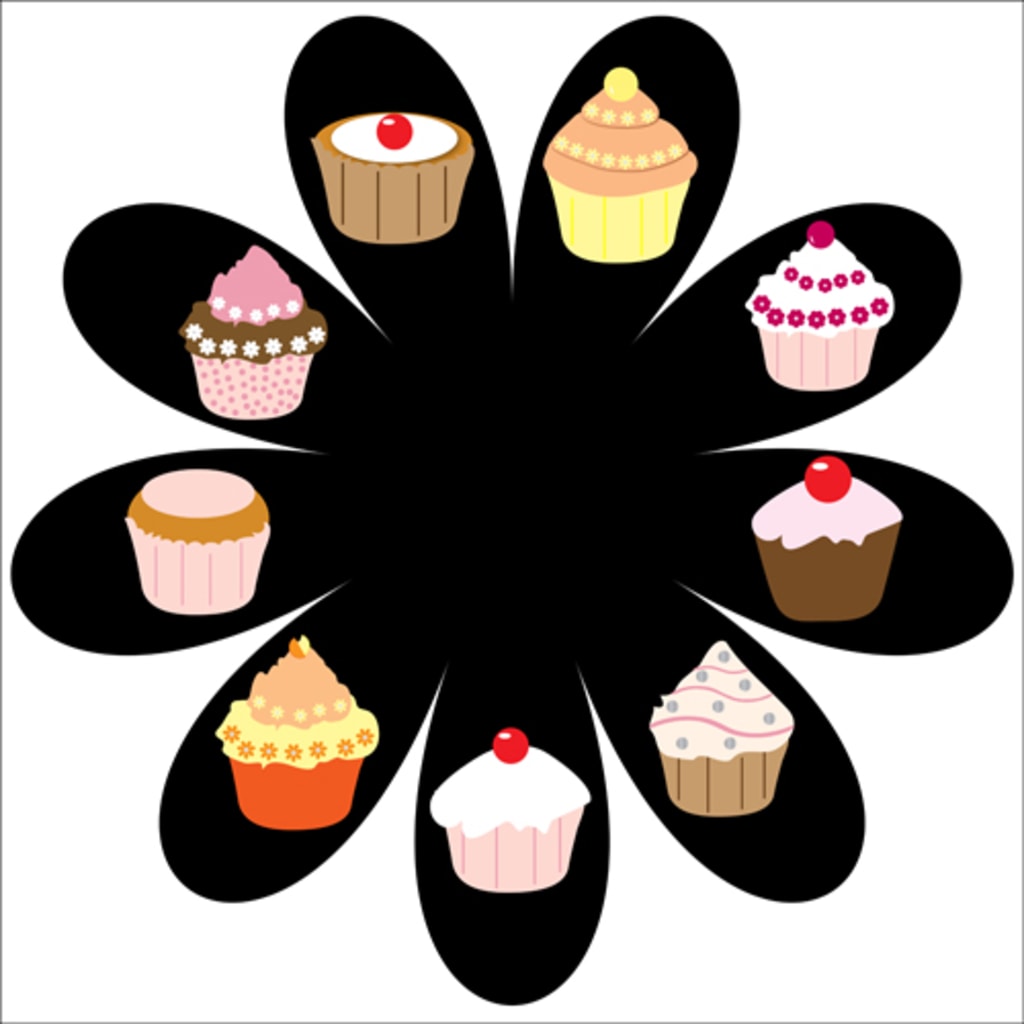Cravings and How to Avoid Them
The most annoying thing about food is having inappropriate cravings!

When you are trying to shift to a healthy diet, or are on a weight loss calorie-restricted diet, cravings can really get the best of you! And what’s worse, if it is necessary to eat and not to eat specific foods for medical issues, cravings can be seriously detrimental if given into. Sweets and high carbs are surely ‘good’ to the taste, but NOT good if they’re the wrong ones.
There are two main reasons for these cravings. One is that the person has insulin resistance, and the second is the terrible cycle of the hormones grehlin and leptin. Regardless, all are hormonal reasons. Many women with PCOS and other endocrine imbalances suffer from insulin resistance. Insulin is an appetite suppressant.
Lifestyle changes include modifications to the daily diet. Foods that are low on the Glycemic Index do not spike insulin very high. Choose low glycemic vegetables, beans, and legumes, and whole grains. Always look for high fiber, unprocessed and no-sugar grains like quinoa, to keep insulin balanced.
One of the most important factors is to NOT FORGET PROTEIN! I stress to ALL of my clients to ALWAYS eat a small amount of protein within 15 minutes of waking in order to set the hormone glucagon, which balances insulin and sugar responses throughout the day. For example, if you don’t eat breakfast right away, have at least a small spoon of cottage cheese or a spoon of yogurt when you wake up. If you are an immediate breakfast eater, always add either an egg, a sausage, a small slice of ham, or another protein to your toast, etc. This helps stabilize blood sugar. If your blood sugar gets low in the afternoon (you’ll notice lightheadedness, headaches, shakiness, or that ‘hangry’ feeling), eat PROTEIN, not sugar or carbs. Sugar and carbs can take care of the problem immediately, but it also spikes the insulin and then drops suddenly, starting a craving and the whole cycle over again, because extra carbs increase insulin.
Eat often!! Be sure you eat a healthy snack between meals, resulting in your eating every three hours or so. This can be sliced apple and cheese, some nuts, or even a tortilla and peanut butter. Make sure it has some protein in it, and cheese and peanut butter are good choices, as long as you can eat either one of those. Eating frequently is almost mandatory for diabetics, those with hypoglycemia, and those with PCOS or other forms of insulin resistance. It is ALSO important for those trying to lower the amount of sugars and carbs they are eating, which in fact, creates an insulin/sugar imbalance without having an illness. It is truly something you are doing TO yourself.
Exercising and moving are also important in lowering insulin, or balancing insulin/sugar. Muscle movement uses glucose for energy.
In addition to dietary measures, there are also supplemental nutrients you can take to help level insulin and sugar, which is particularly important in people who have illnesses causing their insulin resistance, or those who have high BMI and have been eating sugar and carbs for a long time. Giving your diet and body a boost and regulating the insulin will give you a better chance at getting healthy sooner, and in avoiding as many cravings. Ask your practitioner about Inositol, a supplement many naturopaths and nutritionists use for managing insulin resistance in PCOS and other situations.
Now… on to those other pesky hormones, grehlin and leptin.
As the stomach, along with the intestines, get filled from eating, they circulate hormones lovingly-known as ‘satiety’ hormones. These are cholecystokinin (CCK), Glucagon-like Peptide (GLP-1) and Peptide YY (PYY). As the stomach and digestive system empty, the ‘satiety’ hormones subside and the body’s need for additional calories increases. Along with that, the hormone ghrelin, is secreted by the lining of the stomach in response. This stimulates the appetite. Ghrelin acts on brain receptors that induce ‘pleasure rewards,’ and when there is too much, it causes food cravings.
Ghrelin (lenomorelin, or INN) is known as “the hunger hormone.”
Ghrelin production is stimulated by high fructose corn syrup, which is found in nearly every processed food today. Even many commercial yogurts are high in this ingredient, as is wheat bread and many other things that in a cursory way seem ‘healthy.’ When you eat foods high in high fructose corn syrup, your body produces more Ghrelin and tells your body you need ‘more.’ This, in turn, forces your body to believe it needs yet more carbs and sweets, and the cycle goes on and on.
Another “satiety’ hormone is leptin, the opposite of ghrelin. The hormone leptin helps regulate energy balance by inhibiting hunger. Ghrelin and leptin work together to act on receptors in the arcuate nucleus of the hypothalamus to regulate the appetite, and in turn, achieve perfect energy homeostasis. By eating way too much high fructose syrup, which is unfortunately in so many food products, a person is imbalancing this perfect process. When a person becomes overweight from the Ghrelin overproduction, the body also becomes resistant to leptin, which means there becomes an inability to recognize satiety, despite the high energy stores. Leptin levels vary, depending on the amount of fat, and vary throughout the day.
The only way to decrease ghrelin is through dietary measures. Raising Leptin, by avoiding leptin resistance, can only be achieved through dietary measures, although there is a pharmaceutical product, an analog of human leptin metreleptin, has been approved for treatment of complications of true leptin deficiency, and for diabetes and hypertriglyceridemia, which is associated with congenital or acquired generalized lipodystrophy. While there ‘are’ over the counter leptin supplements, they are fully digestible supplements, which mean they never reach the bloodstream, and thus the receptors.
Dietary measures to lower ghrelin and improve leptin include:
•Avoid Hugh Fructose Corn Syrup. This is number ONE.
•Avoid MSG. MSG suppresses leptin, and causes your body to lose its ability to tell that it is full.
•Eat every three to four hours. Ghrelin is produced in four hour cycles. Having a small meal, even if it means breaking up your lunch into a portion at noon and a portion at 3:30 (a good way to eat often while not adding calories), this will tell your body the stomach is satisfied and not stimulate a large amount of ghrelin to be secreted. It also helps keep your blood sugar stable. Make sure there is a protein in each one of these small meals.
•Increase your fiber intake. When the stomach is stretched, the body does not feel the need to produce ghrelin.
•Increase Omega-3. A diet rich in Omega-3 boosts leptin. These include grass-fed meats, walnuts, salmon, mackerel, trout, chia seeds, flax seeds, hemp seeds, summer squash and green leafy vegetables like kale, spinach and others.
A serious imbalance can be corrected through a good Wellness Plan tailored to your health needs—every individual is different, so it's never as easy as just eating a ‘healthy food.’ Balancing ghrelin and leptin can especially be helped by beginning your Wellness Plan with a good detox so that the digestive system, which produces ghrelin, can properly function the many, many jobs it has. A holistic nutritionist can help you develop an appropriate Wellness Plan and get back on track! Weight should never be the only reason you start a new daily diet, but rather, to improve your health. Once your diet has had a chance to start making cellular changes, your health AND your weight should improve!
About the Creator
Lisa LaRue-Baker
Lisa LaRue-Baker has been reading and writing since a young age. She has authored, edited and been a consultant on hundreds of articles, handouts and books. She is a tribal historian, musician, and registered natural health practitioner.






Comments
There are no comments for this story
Be the first to respond and start the conversation.